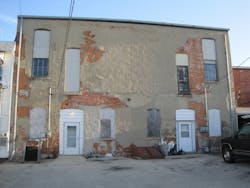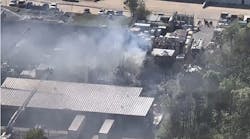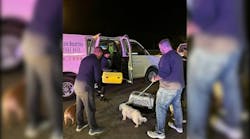Last month’s column outlined five points to consider in assessing your fire department’s true rapid intervention team (RIT) capability, using the National Fire Protection Association (NFPA) 1407 Standard for Training Fire Service Rapid Intervention Crews. The column noted that to succeed in training and functioning on the fireground when it comes to rapid intervention, as a minimum a fire department should be covering 18 points that we began discussing:
Point 1 – Our department has a plan that all members understand and have been trained on for calling a Mayday on the fireground.
Point 2 – My department has the proper rescue equipment to fulfill rapid intervention responsibilities on scene and does not have to call for it after a Mayday is declared.
Point 3 – If a Mayday is called, we have a plan to provide strong command presence in the rescue efforts while maintaining discipline and control of fire suppression measures.
Point 4 – My department members understand their role and are able to practice continual ongoing risk assessment when functioning as a RIT on the fireground.
Point 5 – The RIT is permitted to operate in a proactive manner.
This month’s column examines Point 5 in more detail.
The rapid intervention team must work proactively on the fireground. The members represent an additional set of eyes for the safety officer and incident commander. They must make certain, however, that they are ready to respond at any moment to a member calling for help. Let’s examine what they should be doing.
While the members are enroute, what is taking place or can be determined by radio transmissions? Are aggressive vent-enter-search (VES) techniques being undertaken that may be placing firefighters in precarious conditions? What size hoselines are being led out? Do they have a drawing or layout of the building available that they can study?
Once on scene, they need to establish a location to stage equipment and establish what radio channel they will be working on as the RIT. What is the communications plan if a Mayday is called? Is the RIT operating on a separate frequency? Is everyone with the exception of the downed firefighter moving to a different channel? This is also the time to look at the fire conditions and location. BAG is a handy method for this – where has the fire BEEN, where is it AT now and where is it GOING?
The RIT officer must now check in with the incident commander and find out what is taking place. All of the information listed here can be obtained from a properly filled out tactical worksheet leaving the incident commander able to focus on the fireground.
At this point, the RIT will need to formulate its own size-up, which begins by identifying the type of building construction involved and what is unique to the involved structure (Figure 7). Continuing with size-up, the RIT should initiate proactive measures to ensure a safe fireground. Simple things like communicating that a 704 emblem is indicating a hazard contained inside the building or shutting off gas service should not be ignored by the RIT. This also includes removing any barriers that would prevent firefighters in trouble on the inside of the structure from being able to escape (Figures 8 and 9).
Firefighters working on upper levels of the fireground, including the roof, should have additional egress points established. There is never such a thing as too many ladders. Ladders placed to windows for secondary egress should be placed at or just beneath the window sill for the same reason. Angles on these ladders should also be less than the traditionally recommended 75 degrees. With gear and self-contained breathing apparatus (SCBA), firefighters are top heavy and a ladder that is placed at an angle that is too steep may cause an exiting firefighter to flip over and off the ladder.
The next thing that the RIT should be looking at is where the closest engine is located and what equipment is available for its use if needed. Are there extra ladders, an additional line if needed or even a master stream device that could provide protection? In the same breath, where is the closest aerial device? Can the members of the RIT operate it if they have to? What other tools are available to use off that piece of equipment if needed?
Another responsibility is to make certain that communications with EMS is established and that its location is known so that a rescued firefighter can receive treatment as quickly as possible once removed (see “RIT Responsibilities” on page XXX). Simple actions like these that can be considered before time can save a firefighter’s life.
The most important point is to be focused and ready for the potential job at hand and help prevent that potential job from happening. Train firefighters to be proactive when assigned as RIT rather than just staging and complaining that they did not get a high-profile assignment. Although we do not want to rely on these firefighters as the ultimate insurance policy, they are our last chance in bringing one of our own home safely should the need arise. Considering the first five points mentioned, is your department ready to meet this challenge?
• • •
Next: Training for successful RIT operations






